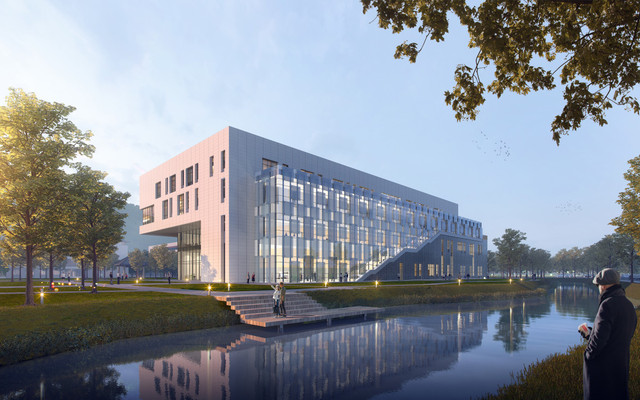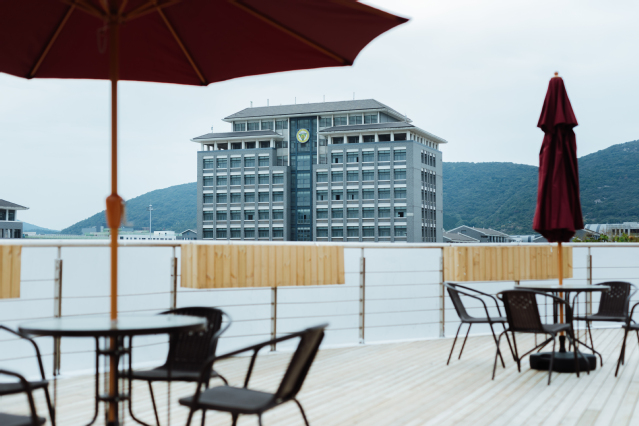
Since 1988 when it was firstly erected in the city of Wuxi, one of the origins breeding ancient China’s southern Yangtze River civilization and known far and wide as the Pearl of the Taihu Lake and a locality of richness, Southeast University Wuxi Campus (hereafter abbreviated as “Campus”) has been recognized to be one of the 1st branch campuses the State Education Commission, now the Ministry of Education, approved Chinese key institutions to open away from their main campus as well as a pioneer carrying out the national initiative of the Educating and Training Outstanding Engineers Plan (PETOE) which was launched in 2010. Founded at the joint efforts of SEU and Wuxi Municipal Government, the Campus has been deploying its course towards a “government-industry-university-research” base where such top-notch missions as talent fostering, scientific research and technology transfer are undertaken with respect to the comprehensive development for the local economy and society.
SEU has been working out its effective ways to develop a high-calibre campus highlighting “High-level, Internationalization, Localization and Distinctiveness” in response to China’s appeal for universities to open up and harness their roles in strategic industries, and President Xi’s call for “Building world-class universities with Chinese characteristics”. The Campus takes it as its ultimate commitment to serve as an intellectual drive for cutting-edge academic studies around the globe and the critical strategies across the country. Now it is vigorously forging ahead, with supportive efforts from the local government to help thrive the integrated circuit sector which is branded with national pillar importance and also the emerging industries such as digitalization of the Internet of Things and big data where interdisciplinary quests may be achieved.

The educational programs of the Campus are conducted based on SEU’s 3 “national 1st-class” disciplines, which also give an impetus to the growth of the demonstrative microelectronics school in Wuxi, accredited by the state. It runs 3 undergraduate programs, respectively concentrated on the directions of the information science, the electronic science & engineering, and the Internet of Things, where students need to spend the first two years in Nanjing main campus and transfer to Wuxi to complete the last two years. The master program it operates blends 12 research directions into the one electronic information and the doctoral degrees are conferred to candidates majoring in microelectronics and solid state electronics, and electronic science & technology (of IC concentration). There are now about 1,500 students across the Campus. The Campus has been developing dialogues and collaboration with the best universities in the world, including the KU Leuven of Belgium, the OSAKA University of Japan, and TU Delft of Netherlands, in order to accelerate its step for an international community offering top talent training and technological innovation accomplishments in the areas of microelectronics, IC design and fabrication. And the program cooperatively initiated by SEU and KU Leuven got to enroll its first batch of students on the Campus in 2019.
Nearly 150 committed Chinese and foreign faculty members contribute their genius to our Campus, more than 10 of them being top-notch academicians, or on the China’s “Thousand Talents Plan” or the “Youth Thousand Talents Plan”, and 6 of the total having foreign nationalities. All of them are PhD degree holders, about 68% achieving associate prof. or higher titles, 20 industrial experts. The Campus boasts 5 faculty teams led by 5 academicians and 1 by the nationally recognized talent, who are experts in the areas of 3D integrated packaging, device atomic scale characterization, MEMS manufacturing, system reliability analysis and prediction, printed electronics.
Over the past 30 years, leveraging its advantageous research in the integrated circuits and Internet of Things directions, the Campus has witnessed the establishment of over 20 scientific facilities including the “National Application-Specific Integrated Circuit System Engineering Technology Research Center (Wuxi)”, “Southeast University Sensor Network Technology Research Center of the Ministry of Education”, “Jiangsu Integrated Circuit Application Technology Innovation Center of Jiangsu Industrial Technology Research Institute”, “Jiangsu Provincial Lab for IoT Sensor and Control System Engineering in Agriculture”, to name but a few, as well as more than 10 collaborative research center launched with local businesses, which gives students opportunities to temper their theoretical knowledge into the authentic R&D processes, and is also an attempt integrating the value chains connecting education, talent training, industries and innovation.

Now, the Campus is pushing forward a platform, the “International Innovation Center for Micro & Nano Devices and Systems”, which is propped by SEU’s electronic science & technology and information science & engineering disciplines and subject to multidisciplinary services including but not limited to integrated circuits, MEMS sensors, flexible electronics, novel materials, and characterization. It plans to run the center to assist in its mission to develop a diverse portfolio of complex solutions for educational, research and industrial purposes. The center, as it is said, will be made a project of great prestige for holographic studies and the “double first-class” campaign.

In 2020, the majority of lectures are started to be delivered at the newly refurbished spot sited on the east Shanshui Rd thanks to all the sweat and toil the local government agencies afforded. The around 83-acre campus is furnished with 240,000㎡ of architecture. The spacious, collegiate-style lodgings which covers 64,500㎡provide conducive atmosphere for dynamic and cozy learning and living. The Campus has a 6,550㎡sports field that goes a long way in facilitating a number of services for the students as well as the staff to improve their mental and physical wellbeing. Special sessions and classes can be held over an area of 19,000 ㎡, and laboratories are fully equipped to meet the R&D requirements within a 22,300 ㎡space. In 5 years ahead, we’ll see a campus, nestling against the mountainous backdrop, enlivened not only by 5000+ students, also by the vitality from the incredible views coupled with miles and miles of lush plants, distinctive temperament in similar manifestations echoing the over-100-year-old main campus, and the progressive ambiance of international concepts.

